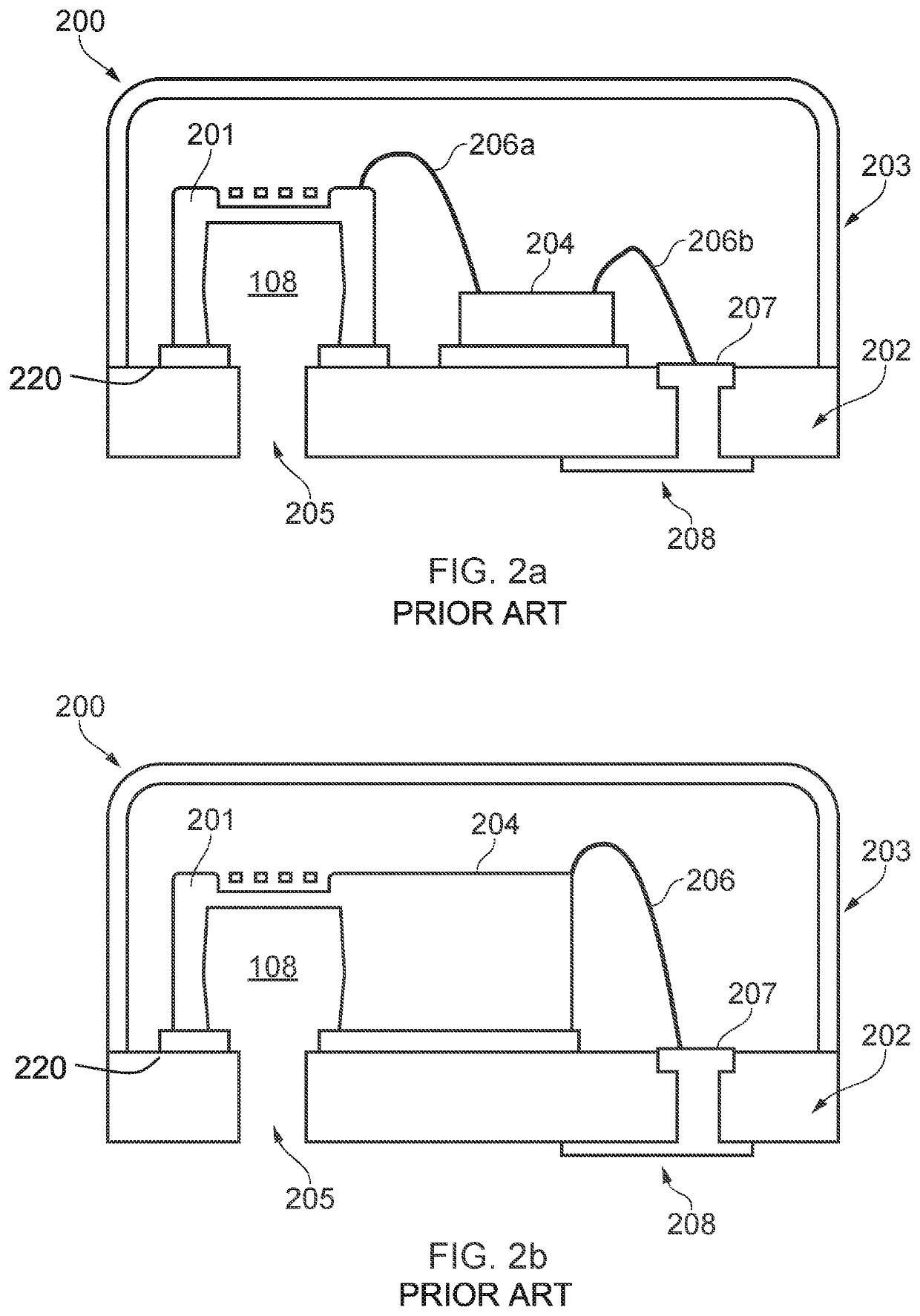MEMS device and process
a microelectromechanical system and transducer technology, applied in the field of microelectromechanical system (mems) devices and processes, can solve the problems of rf and/or psr performance degradation of the transducer, flow towards, bonding solution, etc., and achieve the effect of altering the epoxy wettability of the top surfa
- Summary
- Abstract
- Description
- Claims
- Application Information
AI Technical Summary
Benefits of technology
Problems solved by technology
Method used
Image
Examples
Embodiment Construction
[0022]According to an example embodiment of a first aspect there is provided a MEMS device comprising a MEMS transducer, and a package substrate, wherein a top surface of the MEMS device is bonded to an upper surface of the package substrate at a bond region, wherein the MEMS transducer comprises:
a transducer substrate having a cavity which forms a cavity opening in an upper surface of the transducer substrate; and a flexible membrane supported so as to overlie the cavity,
wherein the top surface of the MEMs device comprises a barrier region, the barrier region being at least partially provided laterally outside a region which overlies the cavity opening in the upper surface of the transducer substrate.
[0023]The barrier region may comprise one or more discontinuities in the surface of the MEMS device. Advantageously, the discontinuities serve to alter the epoxy wettability of the top surface of the MEMS device in the barrier region. Thus it is possible to define (die attach) wettable...
PUM
| Property | Measurement | Unit |
|---|---|---|
| depth | aaaaa | aaaaa |
| flexible | aaaaa | aaaaa |
| wettability | aaaaa | aaaaa |
Abstract
Description
Claims
Application Information
 Login to View More
Login to View More - R&D
- Intellectual Property
- Life Sciences
- Materials
- Tech Scout
- Unparalleled Data Quality
- Higher Quality Content
- 60% Fewer Hallucinations
Browse by: Latest US Patents, China's latest patents, Technical Efficacy Thesaurus, Application Domain, Technology Topic, Popular Technical Reports.
© 2025 PatSnap. All rights reserved.Legal|Privacy policy|Modern Slavery Act Transparency Statement|Sitemap|About US| Contact US: help@patsnap.com



